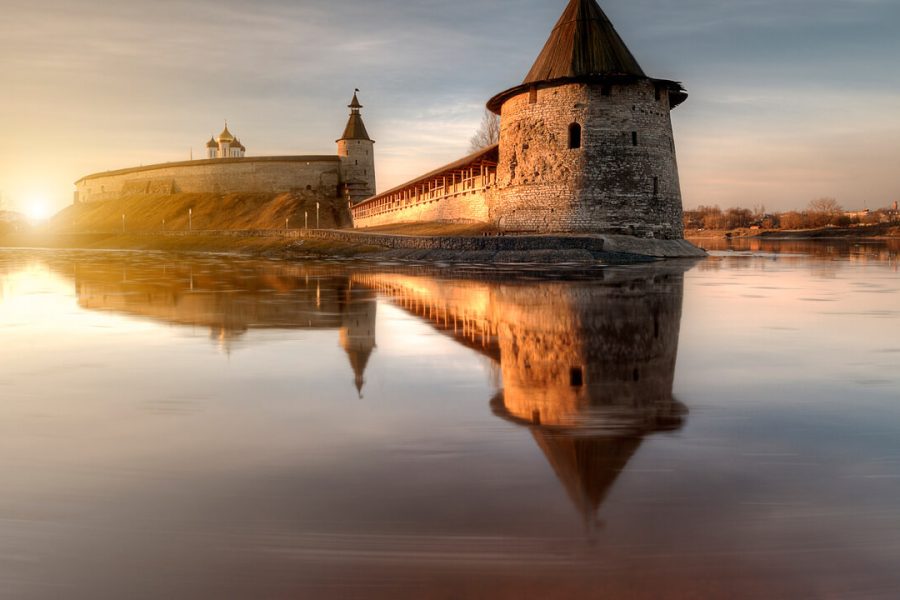Short of going back in time, the best way for most of us to get a feel for what battle was like in the past is to watch TV and movies. Unfortunately, both have given rise to a number of misconceptions about what happened in ancient wars. Here are some of the most common misconceptions about ancient warfare and the warriors involved.
10. The Spartans were great warriors

The "word and sandals" film genre that popularized many Greek epics is also partly responsible for the modern belief that the Spartans were exceptional warriors on the battlefield. And no film has done more to reinforce that belief than "300" .
In real life, while the Spartans were certainly capable on the battlefield, they certainly didn’t have a reputation among the rest of the Greek states for being formidable or even noteworthy for their martial prowess. In fact, in one story, some men from Aegiai went to the Oracle at Delphi to ask who of all the Greeks was the best. The Oracle dealt them a rather cruel blow, suggesting that they were perhaps the worst of all the Greeks, but in the list of who was the best, the only nod the Spartans got was for the quality of their women. It was the men of Argos who were mentioned as being skilled on the battlefield.
In the Battle of Champions in 550 BC, 300 Spartans fought 300 Argives, and the end result was that one Spartan survived and two of their enemies survived. If nothing else, they were evenly matched, with a slight advantage over the Argives.
As for the famous battle shown in the film"300 Spartans" , it is true that King Leonidas of Sparta brought an army of 300 Spartans to confront the huge Persian force. He also brought some six or seven thousand other Greeks from many other city-states, and for two days they held off the Persians at a mountain pass. However, Xerxes' forces were able to outflank the Greek army, and while most of them fled, the Spartans were left behind. The Persians cut off Leonidas' head after he was killed. This was certainly a feat of remarkable bravery by the Spartans, but the fact is that they did not win the battle or prevent the Persians from continuing through Greece.
9. The knights were noble

Most of us think of knights as noble men, given that this is where the concept of chivalry comes from. This myth has often been reinforced in books and movies, especially in the Arthurian legends. Sir Lancelot, Sir Galahad, Sir Gawain and all the rest were polite and noble men. But the reality is that knights were often just men with swords. They were hired muscle who had the skill and the willingness to hurt other people if you wanted to. A man in armor on horseback in the Middle Ages was not much different from a modern tank.
In fact, the code of conduct that we think of as how knights should behave and the rules that they should follow did exist, and it arose as a direct response to the fact that so many knights were being killed by ugly, wild men.
The Church developed the code of chivalry after the attack on Constantinople during the Fourth Crusade. In that battle and many before it, the knights slaughtered civilians. They killed, stole, and raped with impunity because no one could stop them. And that is the only reason the Church sought to create rules to limit their behavior.
8. Medieval armor was incredibly heavy.

There was a long-standing belief among some that a knight in full plate armor would be extremely heavy and clumsy. In the version "Henry V" Laurence Olivier's The Last Jew features a scene in which a knight in full armor is lifted onto a horse by a crane. This gave rise to the modern belief that knights were so bogged down by the weight of their armor that they could barely move, and had to be lifted onto horses to become mobile again.
In reality, armor typically weighed somewhere between 45 and 55 pounds. A modern Marine will carry 60 to 100 pounds of gear into battle. Even a modern firefighter carries 30 to 40 pounds of gear on the job.
7. Boiling oil was a common defense for the castle

Castles were heavily fortified and nearly impenetrable when it came to ancient warfare. They are, after all, giant boxes of stone. Still, they had to be defended, and what better way to destroy a small mass of enemies trying to storm the gates than by pouring a cauldron of boiling oil over them? It seems entirely possible when you say it like that, and chances are you've seen it once or twice in a movie. However, it may not have been like that in real life.
Oil is not cheap and was much harder to come by in the past. Modern technology has made the process of refining oil much easier, but in ancient times, filling a cauldron with oil and then boiling it took a lot of time and money.
There is little evidence that this was a common practice when defending castles. More likely, he would boil a pot of water and dump it on his enemies. Otherwise, hot sand could also be dumped on enemies, as finding extremely hot sand seeping through your armor could burn your skin quite badly. But oil simply wasn't available in sufficient quantity to make this a practical weapon in any way.
6. Knightly combat was highly skilled

It seems that a knight would have to be a highly skilled fighter, and in many cases this was true. But not in every case. And even if a knight had spent years honing his fighting skills, in the heat of battle it was not always practical to go toe-to-toe with perfect sparring technique against his enemy.
In many cases, combat between knights was less about fighting skill and more about who could hit the other guy in the head harder. Given that both men might be wearing heavy armor, your swordplay wasn’t always of the utmost importance. In fact, military historian Robin Neillands has said that “chivalrous warfare doesn’t require much skill, being simply a matter of 'pushing your opponent to the ground.'”
5. Knights were always killed in battle when they lost.

War is usually a brutal business, and there is little mercy on the battlefield. This kind of defeats the purpose of war in the first place. However, there are times when killing is not the primary goal, the end of war.
When knights met on the battlefield during war, it wasn’t always a kill-or-be-killed situation simply for financial reasons. A knight who survived a battle was worth more than one who didn’t. Not only could you take the equipment of a knight you defeated in battle, you could also ransom it from any lord he served. At the Battle of Bremule in 1119, three knights died and another 140 were captured. Part of this was certainly because the knights of the night, who considered themselves Christians, didn’t want to spill the blood of other knights, but the fact that they were worth so much money was also certainly a factor.
4. All battles began with charges

The charge is a basic element of battle that most of us have seen time and time again in movies. Two enemy forces on opposite sides of a battlefield, and then at the right moment, both sides rush together like absolute madmen, weapons drawn, meeting in the middle in a clash of steel and blood. In a movie, it's spectacular as hell, but in real life, it's completely pointless.
This is not to say that the charge is a maneuver that has never been done before. It certainly is, and cavalry charges have a long history in warfare. But if you really want to win a battle, a smart general will never let his soldiers run roughshod over the enemy without some kind of order. Part of the reason Roman armies were so successful in battle is because they made good use of the phalanx. This is an orderly unit of soldiers working together in formation. Breaking formation is what led to losing battles. When soldiers stay in formation, they are in a much better position to defend themselves against the enemy.
The problem with combat formation maneuvers is that they don't look particularly exciting on film.
3. There were no real female warriors (like the Amazons)

One of the most popular tales from Greek history and mythology involves a tribe of warriors known as the Amazons. This is in no small part due to Wonder Woman. When combined with other tales from Greek mythology, such as the stories of Hercules, it is common to think that the idea of the Amazons was purely fictional. In fact, this is not the case at all.
Evidence from burials found in Russia has shown that the Scythian women, whom Herodotus believes to be descendants of the Amazons after the unification of the two peoples, were very much warrior women. The excavated graves show women buried next to their weapons. Their skeletons show that they were bowlegged, indicating that they spent a lot of time on horseback, and they were unusually tall for the time period in which they lived. So, in fact, they really were giant warrior women. At least, that’s what some Greek warriors believed.
2. The swords were heavy

You've undoubtedly seen at least one movie in which a character moves to pick up a broadsword that another character was just holding, and falls over under the weight of the object. By today's standards, there's little doubt that a sword must have been a large, crude weapon that was incredibly unwieldy except when used by the most skilled and powerful knights of antiquity.
The truth is, swords weren't bulky at all. If you think about it, how could they be? If a sword was hard to move, it was useless in combat. No matter how strong you were, the momentum created by swinging a massive, heavy piece of metal would make it nearly impossible to use in combat.
The average sword used by people in the Middle Ages weighed between two and a half and three and a half pounds. A hand-and-a-half fighting sword would probably weigh around four and a half pounds. Even the largest two-handed swords, used by the strongest fighters, rarely weighed more than three kilograms, which is only about six and a half pounds.
1. The bloodstreams were supposed to bleed the enemy

There is a line in the center of many swords that you may have noticed if you have taken the time to look at one. This shallow groove runs almost from the hilt to the tip of the blade. You will see them on bayonets, some Japanese blades, and even some fighting knives. The proper name for this groove is a fuller, but they are also known as blood grooves and blood gutters.
The name "blood groove" gave rise to the belief that the purpose of the fuller was to allow blood to seep out of the wound after you stabbed your enemy, causing them to die faster. If the blade did not have a blood groove, then theoretically the blade itself could seal the wound and the victim would not bleed much at all. The groove ensured that blood would spill out and your victim would soon die; if not from the wound itself, then from blood loss.
The fact is that the blood groove has nothing to do with blood. Instead, the fuller is incorporated into the design of the blade when the smith makes it to reduce the overall weight of the weapon. A blade with a properly designed fuller can be over 35% lighter than an identical blade without a fuller. There is no sacrifice in the integrity of the blade itself or its ability to function.













Оставить Комментарий